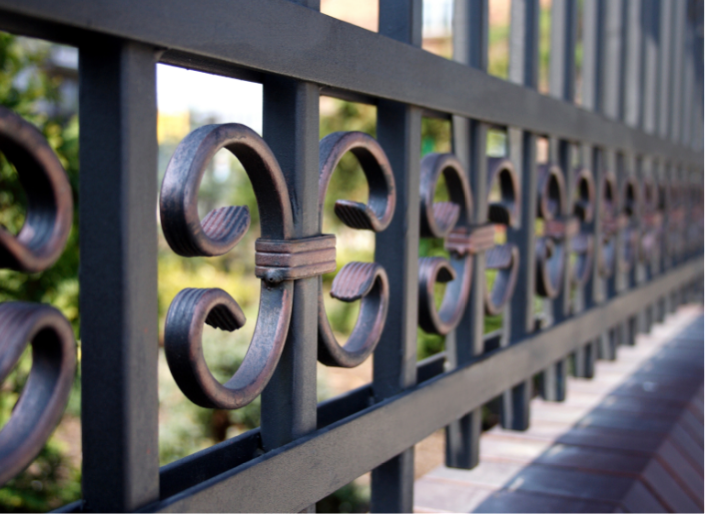Aluminum fencing is one of the most popular fencing types because it is lightweight, corrosion-resistant, and can last for many years with little maintenance. Aluminum is silvery-white in appearance, but there are aluminum metal fences that are sold in colorful variants, providing customers with a wider set of options for their home improvement projects. Amongst the most common color choices are black, bronze, and white. To achieve a different color, an aluminum fence undergoes powder coating.
What is Powder Coating?
Powder coating is a finishing technique where a raw material, such as aluminum, is either dipped in or sprayed with an electro-statically charged powder. The coat is then baked or heated in an oven or under a heat lamp to secure its bond on the metal’s surface. Powder coating creates a smooth and attractive finish, similar to the look of a wrought-iron fence. But more importantly, powder coating increases the durability of aluminum against chipping, fading, chemicals, corrosion, and general wear and tear. To ensure the strength and quality of powder coat finishing, several tests are conducted after the coat is applied. Below are some of them.
Film Thickness Test
Powder coating can be a challenging process as some of the coating may be lost or reduced when the metal undergoes subsequent procedures after coat application. Measuring the thickness of the coating is important as it ensures product quality and may indicate parts which require recoating. Mechanical or electronic gauges are used to test the film’s thickness before and after the coating process to verify if the powder coating is within the required thickness range.
Color Match Test

Visual inspection is conducted after the aluminum had undergone the baking process. Once the material is cooled off, the powder coat finish is compared to the color chip. Visual inspection identifies gaps in coating, bubbles, or warping. While visual comparison may help approximate differences between the color chip and the finished product, there could be room for errors due to lighting conditions. Testing color quality using instruments like a spectrophotometer provide a more in-depth color analysis and will help determine issues in coating efficiency and consistency.
Adhesion Test
Adhesion tests determine how well the powder coat binds itself on the metal’s surface. The following are some examples of adhesion tests:
- Crosshatch: A special tape is applied on the coating and is then removed quickly to see if any powder is lifted away from the surface.
- Mandrel Bend: A sample of the cured panel is placed on a device, bending the sample to check if the coating cracks or peels away from the bent area.
- Impact Test: An anvil is dropped onto the surface of a sample to assess if the coating cracks or loses adhesion to the impact or compacted area.
Salt Spray Test
Salt spray test is a durability test that determines the coating’s resistance to rust and corrosion. During salt spray testing, a portion of metal panel is scribed with a line or X mark and then subjected to a high-saline, corrosive mist at set intervals. The amount and distance of creepage from the scribed mark determines if the coating passes the test.
By conducting powder coat tests, manufacturer can ensure product reliability and performance and help gain customer trust. While powder coat tests are conducted at the manufacturer’s end, it is also important for customers to understand how these tests work so they can evaluate if they’re receiving value for their money.

